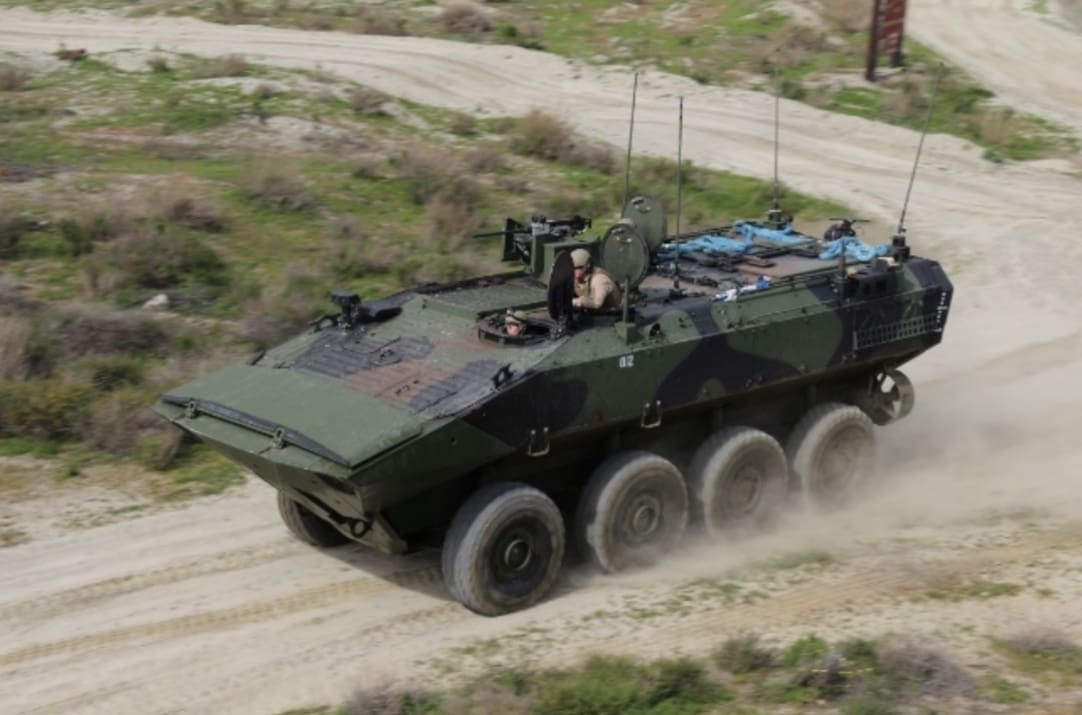The US Department of Defense announced today:
BAE Systems Land and Armaments L.P., Sterling Heights, Michigan, is awarded an $184,444,865 fixed-price-incentive (firm target) modification to previously awarded contract M67854-16-0006 for amphibious combat vehicles (ACV). This modification provides for the procurement of 36 full rate production ACVs and other associated production costs for the Marine Corps. Work will be performed in York, Pennsylvania (60%); Aiken, South Carolina (15%); San Jose, California (15%); Sterling Heights, Michigan (5%); and Stafford, Virginia (5%). Work is expected to be completed in November 2022. Fiscal 2021 procurement (Marine Corps) funds in the amount of $184,444,865 are being obligated at the time of award, none of which will expire at the end of the current fiscal year. The Marine Corps Systems Command, Quantico, Virginia, is the contracting activity (M67854-16-C-0006).
Marine Corps’ Program Executive Office Land Systems issues a story about the program:
Marine Corps will begin fielding Amphibious Combat Vehicle

Marine Corps Base Quantico, Va.— The Marine Corps’ new Amphibious Combat Vehicle has achieved two new major milestones.
On Nov. 13, the Marine Corps’ Capabilities Development Directorate approved the Initial Operational Capability of the ACV. Marines with 1st Marine Division aboard Marine Corps Base Camp Pendleton, California, were the first to receive the vehicle.
The Program Manager Advanced Amphibious Assault program office at Program Executive Officer Land Systems manages the system.
“We’re providing Marines with a modern, armored personnel carrier that offers tremendous capability with respect to survivability,” said Col. Kirk Mullins, program manager for Advanced Amphibious Assault at PEO Land Systems. “The ACV gives the Marine Corps a capable platform operational across the full-range of military operations.”
Then, on Dec. 8, Assistant Secretary of the Navy (Research, Development and Acquisition) James Geurts approved the vehicle for Full-Rate Production. This means the Marine Corps can build and field higher quantities of the ACV at a sustained rate over the next several years.
What is the ACV?
The ACV is a next-generation, eight-wheeled vehicle designed to move Marines from ship to shore. The vehicle will be the primary means of tactical mobility for the Marine infantry battalion at sea and ashore, replacing the Corps’ aging Assault Amphibious Vehicle.
The ACV provides organic, direct fire support to dismounted infantry. The vehicle’s ability to leverage waterways to carry Marines and equipment make it well-suited for various operating environments, including Expeditionary Advanced Base Operations.
It is net-ready, secure, interoperable, operationally effective and built for future growth. In the future, the Corps intends to develop, procure and field three additional variants that specialize in command and control, recovery operations and increased firepower.
“The fielding of the ACV is significant because we’re replacing the AAV, which has been effective for decades but was fielded in 1972,” said Mullins. “We’re providing Marines with a modern, more capable combat vehicle that is more adaptable to today’s battlefield.”
Col. David G. Bardorf, the director of Ground Combat Element Division at the Marine Corps’ Capabilities Development Directorate, said the ACV has progressed significantly since its initial requirements discussions in 2014. Combat Development and Integration was responsible for developing the requirements set that would be needed to replace the older platform.
“Reaching IOC is a testament to those involved in this program and the constant communication between the stakeholders: requirements, program managers, and [the vendor],” said Bardorf. “In the end, the Marine Corps is receiving an upgrade in capability ahead of schedule. We look forward to the program moving forward towards Full Operational Capability.”
Mullins said the vehicle is projected to reach FOC in fiscal year 2028.
Marines excited for new vehicle
In 2019, PEO Land Systems oversaw extensive testing involving the ACV that confirmed the vehicle’s ability to not only take on challenging surf, but also complete a long swim from ship to shore. The testing also indicated that the ACV has greater survivability and mobility than the AAV.
In 2020, Marine Corps Operational Test and Evaluation Activity performed independent operational testing involving the ACV’s achieved suitability, effectiveness and survivability. Results from the assessments, as well as feedback from Marines trained to employ the vehicle, came back positive.
Mullins believes the ACV achieving IOC and FRP is a significant achievement for the Marine Corps, as Marines will receive an innovative vehicle that further supports their missions in various combat environments for years to come.
“As program manager, I’ve spent a lot of time speaking with Marines who have trained with this vehicle in a variety of test environments,” said Mullins. “The feedback we’ve consistently received has been overwhelmingly positive. Marines seem to really love the vehicle.”
Story by Barb Hamby, PEO Land Systems
Photo by by Ashley Calingo

